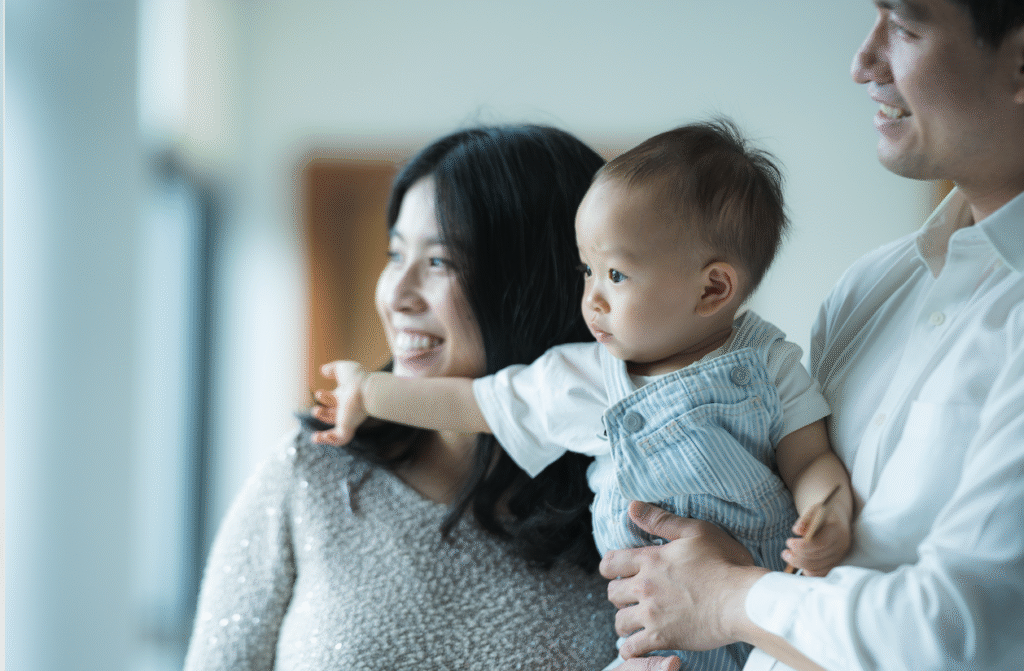Real Stories. Real Strength.
Real Hope.
Discover how patients used precision medicine to fight cancer with clarity, courage, and personalized guidance. Their journeys show the power of science-driven decisions.
News Style Grid Post with Image
Display your blog post individually in full grid view on a light background
It is a paradisematic country, in which roasted parts of sentences fly into your mouth. Even the all-powerful Pointing has no control about"The moment I walked through the doors, I knew I was in good hands. The team took the time to explain every step of my treatment, and their personalized approach made all the difference. Today, I'm cancer-free and grateful for the care I received."
Andrew Hayes Breast Cancer Survivor"Watching my 5-year-old battle leukemia was the hardest thing I've ever been through. The staff here made it bearable—they treated my son with kindness and explained everything in terms he could understand. Today, he's in remission and back to being a kid."

"When David was diagnosed with Parkinson's, we were overwhelmed. The support we received—both for David's treatment and for me as his caregiver—was extraordinary. They treated our whole family, not just the patient. We're managing better than we ever thought possible."

Our Patients' Journeys
At Hope Medical Center, we believe in treating the whole person, not just the condition. Below, you’ll find authentic stories from patients who have experienced our personalized approach to care.
I first noticed something was wrong in early 2022. I’d be exhausted halfway through my morning walk—something that never happened when I was on the fire department—and I was drinking water nonstop, even waking up three times a night to quench my thirst. My wife, Linda, joked that I was “turning into a fish,” but deep down, I knew it wasn’t a joke. I’d watched my dad struggle with Type 2 diabetes for years, and the symptoms felt too familiar to ignore.
I finally went to my primary care doctor, and after a blood test, he delivered the news: My A1C was 9.2%—way above the normal range of 5.7% or lower. “You have Type 2 diabetes,” he said, handing me a prescription for metformin and a list of “no-no” foods. I left the office feeling defeated. My dad had spent years dealing with nerve pain, foot ulcers, and kidney issues because he couldn’t manage his diabetes, and I was terrified I’d follow the same path. I’d already given up my career as a firefighter due to a back injury; now, it felt like my health was slipping away too.
I’ve always been a guy who loves food. Every Sunday, my wife, Mary, makes a big pot of chili—spicy, meaty, the kind that sticks to your ribs—and my kids and grandkids come over to eat, laugh, and argue about football. But by 2022, those Sundays started to feel like a punishment. Thirty minutes after finishing a bowl of chili, a burning pain would start in my upper stomach—so bad I’d have to lie down on the couch, clutching a heating pad, while everyone else cleaned up.
At first, I blamed it on “too much spice” or “eating too fast.” I cut back on chili, stopped drinking coffee (my morning staple), and even avoided tomato sauce—something I’d loved since I was a kid. But the pain didn’t stop. It got worse. I’d wake up at 2 a.m. with a “gnawing” feeling in my stomach, like I hadn’t eaten in days. I’d keep a bottle of antacids in my truck, my toolbox, even my nightstand—but they only helped for 10 minutes, if that.
By the time Mary dragged me to the doctor, I’d lost 15 pounds. I was tired all the time (the pain kept me up at night), and I’d stopped joining the guys for lunch at the construction site—instead, I’d sit in my truck and eat a plain sandwich, scared anything else would trigger the pain. The first doctor I saw said it was “just heartburn” and prescribed a generic acid reducer. I took it for two months, but nothing changed. I started to think I’d never eat Mary’s chili again—or enjoy a family meal without worrying about the pain that would follow.
My knees started hurting when I turned 68. At first, it was just a dull ache after walking to the grocery store or climbing the stairs to my apartment. I told myself it was “just old age”—something I’d have to live with. But by 2023, the pain had gotten so bad I could barely stand for 10 minutes. I stopped going to my weekly book club (I couldn’t sit in the hard chairs without wincing), I turned down my granddaughter Lily’s invitation to go shopping for her wedding dress (she’d begged me to be her “second opinion”), and I even started using a cane—something I’d promised myself I’d never do.
The worst part was watching Lily practice for her wedding. She’d ask me to “dance with her” in the living room, and I’d have to say no—my knees would throb just thinking about bending them. One night, I sat on the couch and cried while Lily showed me photos of wedding venues. I thought, I’ll never be able to walk her down the aisle. I’ll have to sit in a wheelchair and watch from the back. I’d seen my sister struggle with knee pain for years, and she’d ended up having a total knee replacement that left her in physical therapy for months. I was terrified of surgery—but I was even more terrified of missing the most important day of Lily’s life.
Mia was 4 when she had her first asthma attack. We were at her birthday party—she’d just blown out the candles and was chasing her friends around the living room—when suddenly, she stopped, bent over, and started gasping for air. Her face turned red, then blue around the lips, and I froze. I’m a school nurse—I know how to handle emergencies—but when it’s your own kid, your brain goes blank. I grabbed the inhaler the pediatrician had given us (after a “mild wheezing” episode a month prior) and helped her use it, but it did nothing. By the time the ambulance arrived, Mia was barely breathing.
Request
More Information
Our team of experts is available to answer your questions about cancer testing.
Understand Precision Testing
Learn how liquid biopsy and chemo sensitivity testing can personalize your treatment plan.
Make Informed Decisions
Gain knowledge to actively participate in treatment discussions with your healthcare team.
Improve Treatment Outcomes
Discover how precision medicine and metabolic therapies can enhance treatment effectiveness.
Start Your Educational Journey Today
Empower yourself with knowledge about precision metabolic oncology and take an active role in your cancer care journey.






